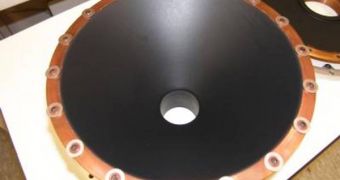Researchers at the National Institute for Standards and Technology (NIST) managed to successfully conclude a new laser-based research recently, having created a prototype nanotube-coated power measurement device for high-precision calibration. The innovation could benefit those laser systems that are now used in the military for defusing unexploded mines in the battlefield or firing ranges. The new power meter was tested at the US Air Force base last week, and performed admirably.
Until now, all power measurement tool devised at NIST were bulky, about the size of a refrigerator, and could not be operated very efficiently in the field. The new, nanotube-coated kind is about the size of a pan, and its outstanding construction ensures that it can withstand laser light about one million times more intense than sunlight, at the same time precisely measuring it, and displaying vital calibration information for the 10-kilowatt (kW) laser system's human operators.
The key to this outstanding success is the use of carbon nanotubes as coating. One of the basic properties that carbon atoms have is that they are able to conduct and disperse heat faster and more efficiently than the standard materials used for such coatings, thus far deployed by the Institute. In addition to their chemical and physical properties, nanotubes are also black, which means that they provide the maximum amount of light absorption possible on Earth.
Experts working on the project learned that the efficiently of their coating was vastly improved when they used multi-walled carbon nanotubes, rather than the single-walled variety. This allowed for a far better heat and energy absorption, as well as with distributing them equally on a designated surface.
To put this new development into perspective, consider the fact that NIST engineers had to design from scratch a tool that could withstand, absorb and analyze laser light developed specifically to melt, reshape or entirely destroy its target. On the other hand, knowing that carbon nanotubes can stop laser light could help in the development of new kinds of armors, which could potentially absorb waves emitted from such devices as laser designators, which are used to guide missile or other types of strike from forward positions in the enemy lines.

 14 DAY TRIAL //
14 DAY TRIAL //